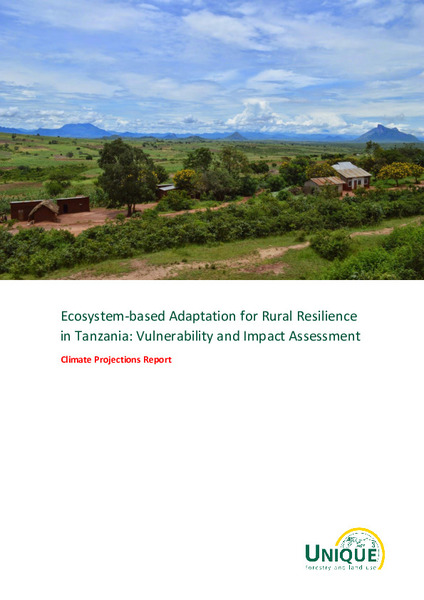| dc.contributor | Climate Change Division | en_US |
| dc.contributor.author | Tanzania, Vice President’s Office | en_US |
| dc.contributor.other | Stanger, Gordon | en_US |
| dc.contributor.other | Manning, Paul | en_US |
| dc.coverage.spatial | United Republic of Tanzania | en_US |
| dc.date.accessioned | 2024-03-19T07:23:13Z | |
| dc.date.available | 2024-03-19T07:23:13Z | |
| dc.date.issued | 2020-01 | |
| dc.identifier.uri | https://wedocs.unep.org/20.500.11822/45219 | |
| dc.description | This climate assessment uses temperature, rainfall, and potential evapotranspiration as the
dominant controlling factors for future planning. Temperature projections are very robust.
Rainfall and ET0 are less accurate because they compound more uncertainties. Mean annual
temperatures are expected to increase by between 0.9 and 1.3°C by mid-century, and by 1.8
to 2.4°C by the end of this century. Rainfall is expected to increase by between about 20 and
40 mm per year by mid-century, and by about 30 to 90 mm per year by the end of century.
This report exercises caution in assessment of rainfall because the variability (not average con ditions) of rainfall determines viability of agriculture, livestock farming, etc. At present there is no reliable methodology for assessing future rainfall variability. Nevertheless, the variability of extreme rainfall, both in terms of flood and drought, will certainly increase towards the end of
this century, possibly dramatically so. | en_US |
| dc.description.uri | https://www.unep.org/explore-topics/climate-action/what-we-do/climate-adaptation | en_US |
| dc.format | pdf | en_US |
| dc.language | English | en_US |
| dc.rights | Public | en_US |
| dc.subject | climate change | en_US |
| dc.subject | United Republic of Tanzania | en_US |
| dc.subject | ecosystem-based approach | en_US |
| dc.subject | climate change adaptation | en_US |
| dc.subject | evapotranspiration | en_US |
| dc.subject | heat stress | en_US |
| dc.subject | Zanzibar | en_US |
| dc.title | Ecosystem-based Adaptation for Rural Resilience in Tanzania: Vulnerability and Impact Assessment - Climate Projections Report | en_US |


